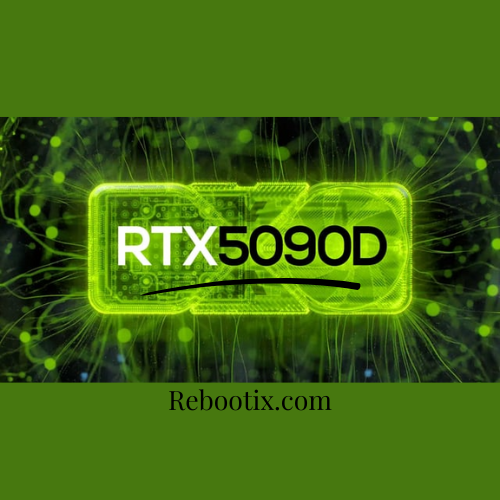Why RTX 5090 GPUs Are Getting Bricked After Updates?
March 2025 saw the release of the NVIDIA RTX 5090 which is among the strongest consumer graphics cards ever made. Having leading-edge architecture, faster memory bands, and top-notch AI support, it immediately appealed to gamers, programmers, and creatives. A number of people are now experiencing “bricked” RTX 5090 GPUs, often after changes to the driver or BIOS.
This guide explains the top 7 reasons your RTX 5090 GPU might be bricked and shares tips to stop it from happening, as well as what actions to take if it occurs. To help it rank high, this article has symmetrical keywords that work with SEO for Google, Bing, ChatGPT, Gemini, and other similar search engines.
1. Problems with Unreliable or Unstable Updates of GPU Drivers
A major reason for RTX 5090 bricking is when unstable or buggy GPU drivers are installed. Several users found that their monitors went black or their GPUs stopped working after using GeForce Experience to install some early versions of RTX 5090 drivers.
Solution:
Drivers are available on NVIDIA’s official website. Generally, don’t put beta drivers on your computer unless they are known to be stable in other places.
2. Poorly performed flashing of the BIOS or firmware
If you use the wrong or modified BIOS or firmware, there is a high risk of the RTX 5090 being completely damaged. There are situations where third-party software updates the firmware without notifying the user.
Solution:
Be sure to get the BIOS updates only from your motherboard’s manufacturing site. Use the built-in feature of the manufacturer’s dual-BIOS to correct any problems.
3. Issues with Windows or OS updates
Due to updates in Windows 11 or Linux kernels, some RTX 5090 users have found their graphics drivers crashing on start-up, generating an error state.
Solution:
Temporarily do not apply any new updates after you install a new RTX GPU. Make a system restore points before doing any major OS updates.
4. Computers struggle with stability after changing the overclocking settings.
The overclock settings stored in third-party apps may not be stable after an update which can harm the core or memory of the GPU.
Solution:
Bring all overclocking settings back to their original ones before you try a new firmware or driver. Recheck the signal strength after you have verified stability.
5. The system could be affected by not enough power or damaged cables.
An 850W power supply unit with an accuracy rating of 80+ Gold or higher is recommended for the RTX 5090. Users have discovered that weak or poorly made PCIe 5.0 cables may induce shutdowns or problems with hardware after an update.
Solution:
All of the remaining cables need to be plugged in firmly, and your PSU power cable should fit. Do not use any connector other than the certified PCIe 5.0 16-pin type.
6. Updates in the BIOS settings of an incompatible motherboard.
Updates on the BIOS in some motherboards can stop the PCIe or power configurations, resulting in the GPU not working properly or starting up.
Solution:
Look up on your motherboard manufacturer’s website to see if RTX 5090 cards are compatible. Go back to the version you used before if anything goes wrong with your BIOS update.
7. Heat-related throttling or damage when a system isn’t cooled well
An updated driver may change how the fans run or give your GPU more power which can cause the system to overheat if your cooling setup is not ideal.
Solution:
Regularly view the temperature of your GPU. Keep the airflow through the cases, the fan speed, and the thermal paste at their best levels.
Ways to Determine If Your RTX 5090 Is Bricked
- The computer does not show anything on the screen when powered on.
- The GPU fans either do not work or are spinning at top speed all the time.
- The device does not appear in Windows or BIOS.
- Setup crashes when a driver is installed.
- Use debug options provided by the motherboard (if it offers them).
How To Fix a RTX 5090 That Suddenly Stops Working
- You can try booting into the secondary BIOS if you are allowed to (if available).
- Access the tools in NVFlash to flash the BIOS from another GPU.
- Boot your computer into Safe Mode and uninstall recent drivers.
- Contact the support team from NVIDIA or your AIB partner for assistance on RMA.
Steps to Safeguard Your RTX 5090 After You Get an Update
- Update drivers and BIOS from the original places where they came from.
- Set up protectors to keep the system safe while you update the code.
- Do not overclock your board just following a firmware upgrade.
- Keep archives of your stable storage software states every once in a while.
- Watch tech forums and Reddit for word from users before installing updates.
Conclusion
The RTX 5090 has a great deal of power, though it is not free from problems caused by software updates. Careful management of your system, clean drivers, and proper handling of hardware stop most RTX 5090 from bricking after updates.
If you have problems, you can use this information to diagnose the problem and try a fix. When you know what to do and are prepared, you can use your RTX 5090 without risk.



